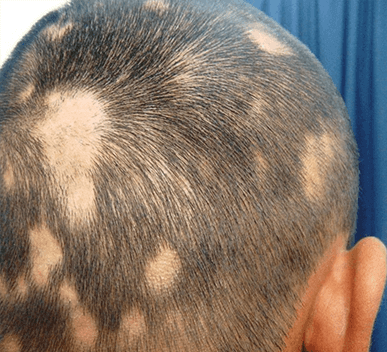Presently there are no universal treatments for alopecia areata that work for everyone. Your dermatologist will develop a treatment plan tailored to your specific needs and built around your medical history.
Treatment options include topical steroid creams and scalp applications applied directly to bald patches, usually twice a day, or steroid injections into the affected area.
Steroid tablets in large doses may help regrow hair, but when the treatment stops the alopecia can recur. This treatment is not a long-term solution due to the potential side effects, including high blood pressure, diabetes, stomach ulcers, cataracts and osteoporosis (weakening bones).
Dithranol cream, which is normally used to treat a skin irritation called psoriasis, may stimulate hair regrowth. Another approach is ultraviolet light treatment two or three times weekly. Relapse of the alopecia is common when the treatment stops.
Immunosuppressant tablets are sometimes prescribed to treat severe alopecia areata that does not respond to other treatments.
If you are concerned about alopecia areata, click here to schedule an appointment with our board-certified dermatologists or walk into Walk-in Dermatology at your convenience for immediate evaluation.







